Phelsuma laticauda
—
Broad-tailed Day Gecko
Subspecies I've seen:

P. l. angularis
Angulated Day Gecko
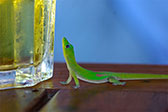
P. l. laticauda
Gold Dust Day Gecko
Phelsuma laticauda angularis
—
Angulated Day Gecko
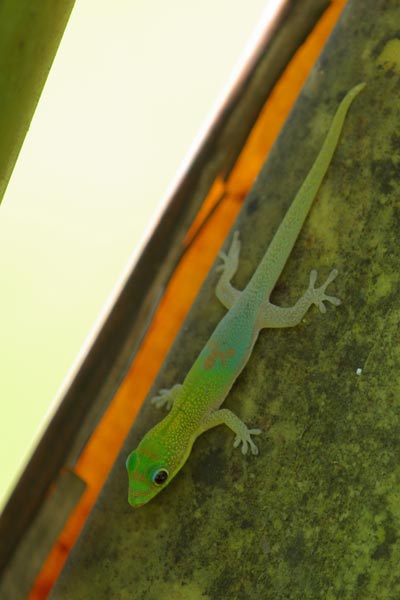
This tiny baby made its home on the leaves of a Ravenela palm tree at the edge of Anjajavy's garden pond. The clearest distinction between this subspecies and P. l. laticauda is that the large red spots on the back typically merge to form a sort of chevron, or "angle", hence the subspecies name.
Here is a list of all the reptiles and frogs I saw on this 2007 trip to Madagascar.
Phelsuma laticauda laticauda
—
Gold Dust Day Gecko
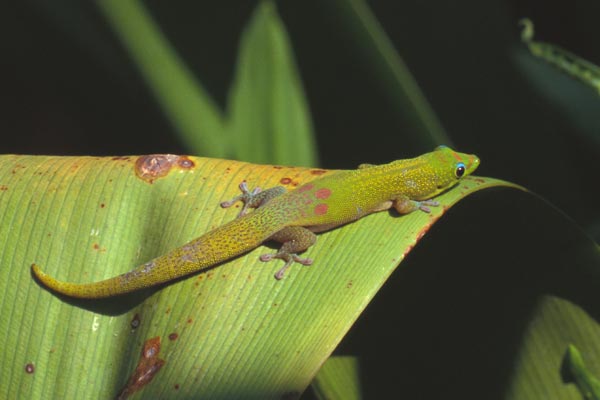
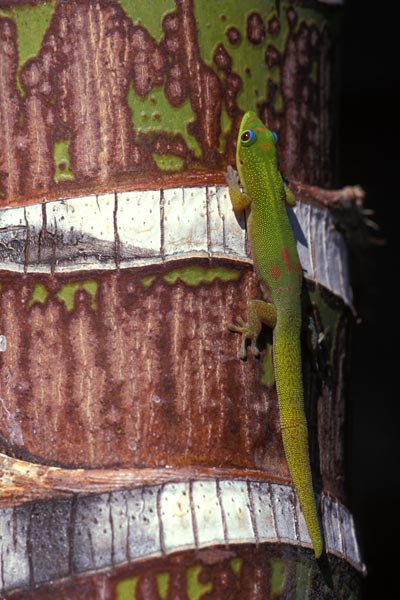
Hawaiians are quite enamored of their geckos, as any souvenir shop will make abundantly clear. Yet none of the geckos found in Hawaii are native to the islands. In fact, probably none of Hawaii's herps at all are native, with the exceptions of sea turtles and sea snakes. Hawaii is just too young and too far away from any continent to have acquired herp species by natural processes. Fortunately for us herp lovers, people have managed to introduce a reasonable number of species deliberately and otherwise.
These lovely little day-active geckos are one of the many similar species native to Madagascar. In fact, this is one of the species I saw in Madagascar, but they managed to evade my (then-primitive) camera at the time. So I was happy to see them again here, and in large numbers. When the sun first hit the deck (excuse me, "lanai") of our room at Uncle Billy's Kona Bay Resort, I could peer over the edge and count 8 or 10 of these little jewels basking on the railings.
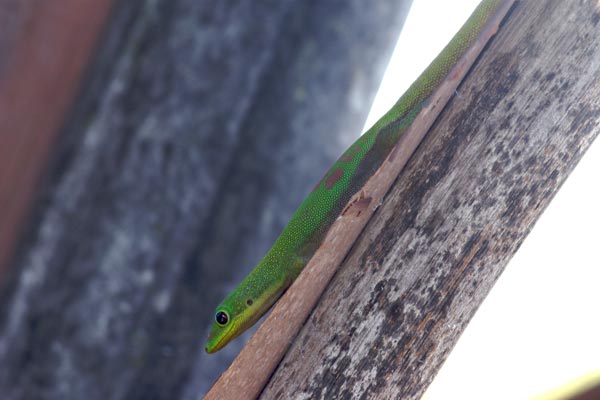
In the morning, after a delicious breakfast at Chez Robert but before we drove off to Ankarana Reserve, I wandered the grounds in search of herps to photograph. Mostly I saw Phelsuma grandis on the bungalows, but I also found a few of these smaller green day geckos on a nearby palm tree.
Here is a list of all the reptiles and frogs I saw on this 2007 trip to Madagascar.
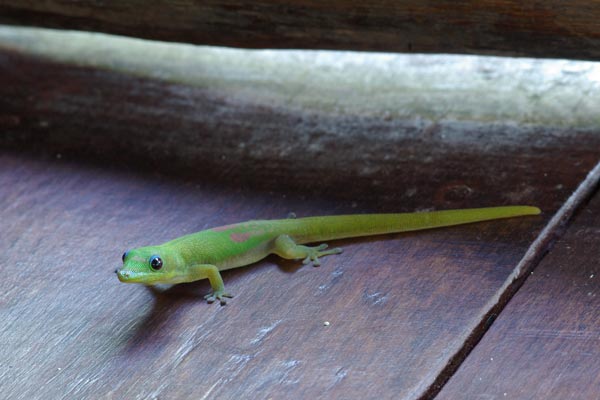

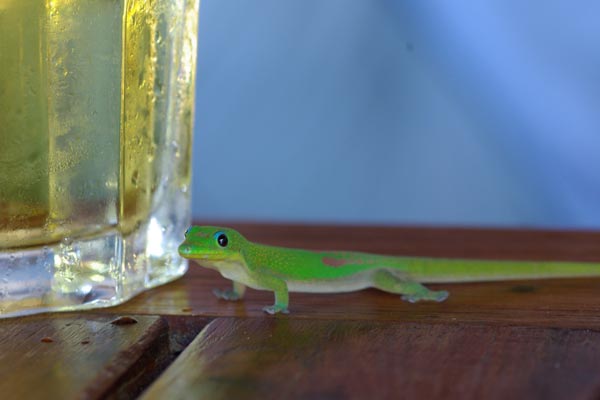
Jardin Vanille is a relaxing place, and we were fairly tired when we arrived, so we spent much of the afternoon hanging out on the bungalow deck. As did, it turns out, a number of geckos. Great big Phelsuma grandis were the more dramatic geckos, but these smaller ones were by far more entertaining. The one pictured here we originally christened "Decky", as it spent much of its time exploring the deck, stopping to carefully lick any unexpected objects. When it discovered perhaps its first mug of the legendary Three Horses Beer, we renamed it "Beery".
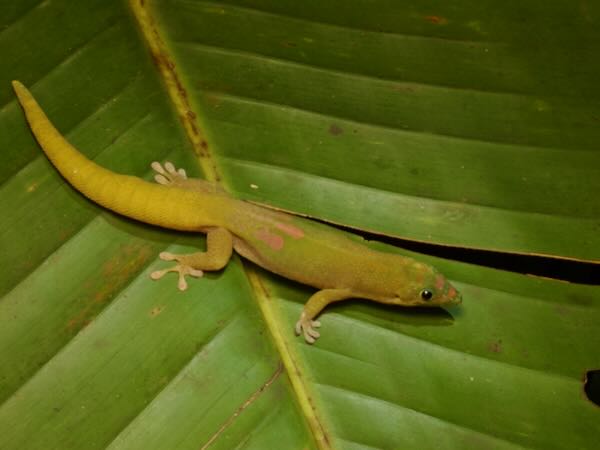
This species is native only to the extreme north of Madagascar; Akanin'ny Nofy is considerably south of that. I don't know if it was deliberately introduced, or whether it hitched a ride on some of the plants that were brought down to be displayed at the Palmarium.
Here is a list of all the reptiles and frogs I saw on this 2023 trip to Madagascar.
Printed references:
- Crother, B. I. (ed.) 2017. Scientific and Standard English Names of Amphibians and Reptiles of North America North of Mexico, with Comments Regarding Confidence in Our Understanding, Eighth Edition
- Glaw, F., Vences, M. 1994. A Fieldguide to the Amphibians and Reptiles of Madagascar, Second Edition
- Glaw, F., Vences, M. 2007. A Field Guide to the Amphibians and Reptiles of Madagascar, Third Edition
- Henkel, F., Schmidt, W. 2000. Amphibians and Reptiles of Madagascar and the Mascarene, Seychelles, and Comoro Islands
- Mckeown, S. 1996. A Field Guide to Reptiles and Amphibians in the Hawaiian Islands
- Rogner, M. 1997. Lizards